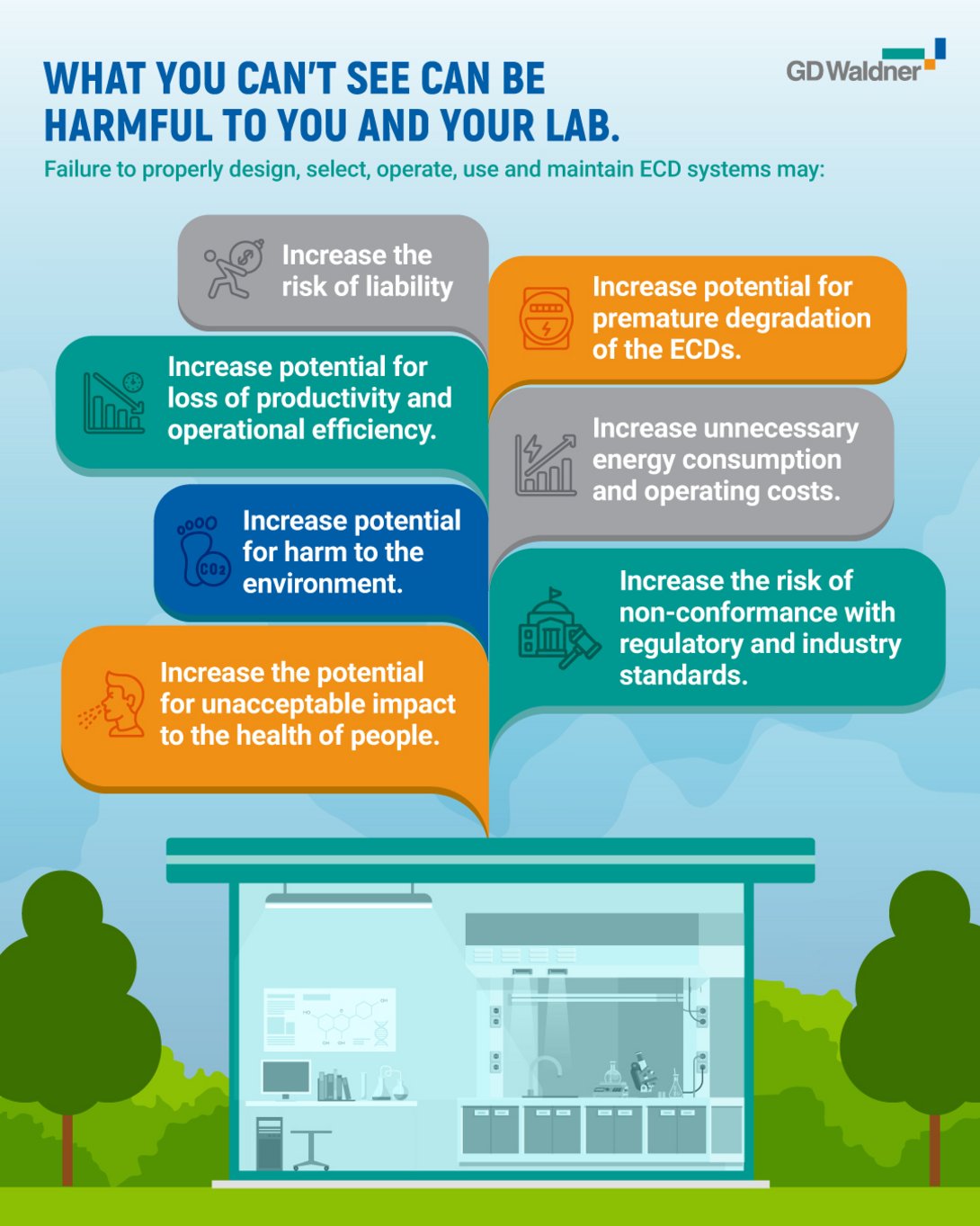As lab developers, we understand that laboratory safety is of paramount importance. We often focus on visible hazards such as chemical spills or broken glass, but what about the unseen dangers? The reality is that what you can't see can be harming you and your laboratory in ways that you might not even realize.
- Increase the potential for unacceptable impact to the health of people: Many hazardous substances used in laboratories can have adverse effects on human health, even at low concentrations. These substances can cause respiratory problems, cancer, or other chronic health conditions. According to a study published in the Journal of Occupational Health, over 50% of laboratory professionals have experienced health issues due to workplace exposure to hazardous substances. In addition, laboratory workers are also at risk of exposure to biological agents, such as bacteria and viruses, which can lead to infections and other health problems.
- Increase potential for harm to the environment: Laboratories generate a significant amount of waste, including hazardous chemicals, biological agents, and radioactive materials. Improper disposal of these materials can have harmful effects on the environment, including pollution of waterways and soil. In addition, laboratories consume a significant amount of energy and water, contributing to greenhouse gas emissions and resource depletion.
- Increase potential for premature degradation of the ECDs: Exposure Control Devices (ECDs) are critical components of laboratory equipment, including fume hoods, biosafety cabinets, and other ventilation systems. However, exposure to hazardous chemicals and biological agents can cause premature wear and tear on these devices, leading to malfunctions and failures.
- Increase potential for loss of productivity and operational efficiency: Laboratory downtime can be costly and disruptive to operations. Exposure to hazardous substances can cause equipment malfunctions and failures, leading to downtime and decreased productivity. In addition, regulatory and compliance issues can result in costly fines and other penalties.
- Increase unnecessary energy consumption and operating costs: Improperly maintained laboratory equipment can consume significant amounts of energy, leading to increased operating costs and environmental impact. For example, a poorly functioning fume hood can use up to three times more energy than a properly functioning one.
- Increase the risk of non-conformance with regulatory and industry standards: Laboratory professionals are subject to a wide range of regulatory and industry standards, including OSHA, EPA, and FDA regulations. Failure to comply with these standards can result in fines, legal liabilities, and damage to the laboratory's reputation.
- Increase the risk of liability: Failure to maintain a safe and healthy laboratory environment can result in liability for the laboratory, including legal action from employees or third parties who are harmed as a result of exposure to hazardous substances.
In conclusion, what you can't see can indeed be harming you and your laboratory in a multitude of ways. At GD Waldner, we recognize the importance of maintaining a clean and safe laboratory environment and offer innovative solutions to help our clients achieve this goal. By investing in proper ventilation, air filtration, and hazardous waste management, laboratories can ensure the safety and health of their personnel, protect the environment, and increase operational efficiency and productivity.

